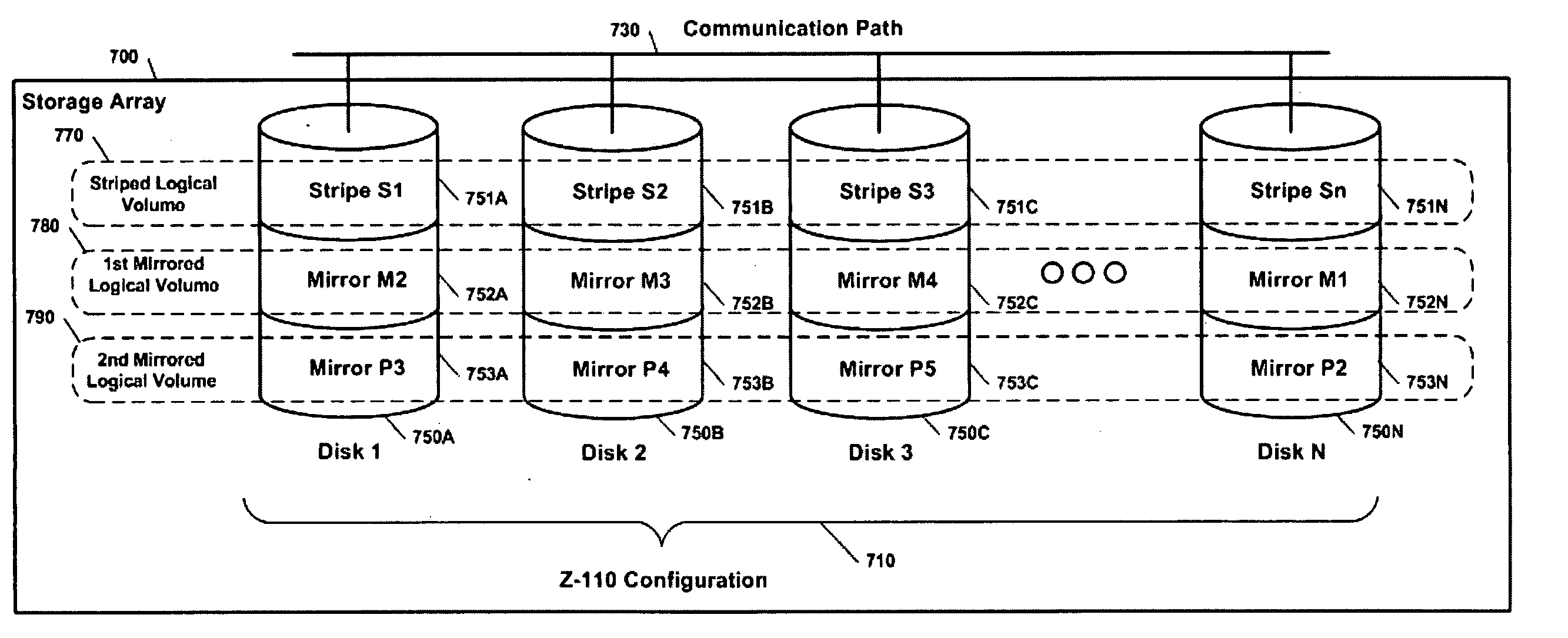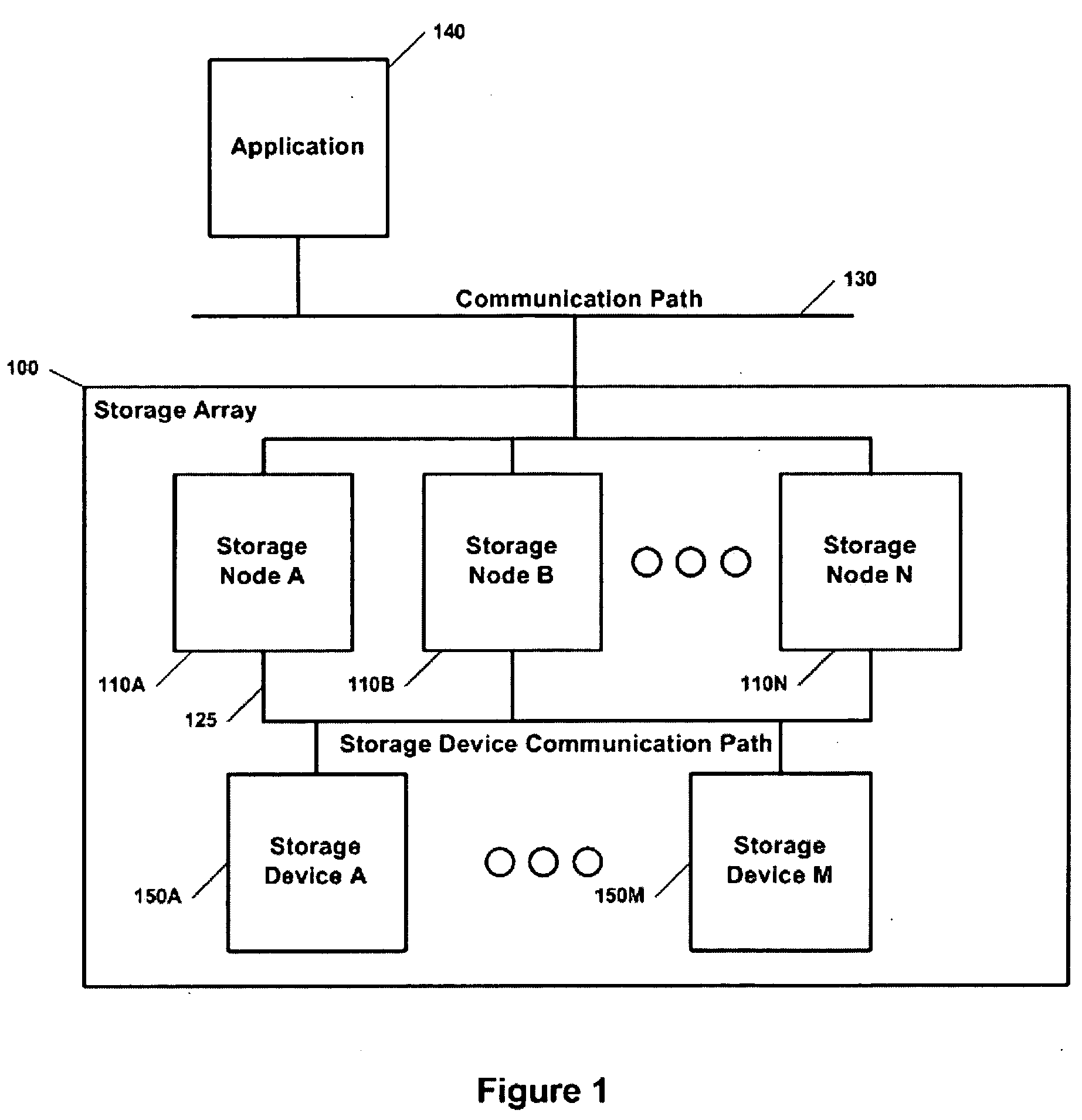Topology independent storage arrays and methods
a storage array and topology technology, applied in the field of storage arrays, can solve the problems of high cost, unfavorable performance improvement, and high cost, and achieve the effect of reducing the over-cost of the system
- Summary
- Abstract
- Description
- Claims
- Application Information
AI Technical Summary
Benefits of technology
Problems solved by technology
Method used
Image
Examples
examples
[0077] Topology independent storage arrays like Z-RAID™ systems can offer reliability through parity similar to RAID-5, or through data redundancy; and offer performance through striping data across multiple storage devices. Furthermore, the number of storage devices in a storage array is arbitrary because each storage node is a virtual construct only requiring a processing unit and a memory. Capacity of a Z-RAID™ system scales incrementally with the number of storage devices in the system and the number of storage nodes allocated to the array as determined by the array's policy. If reliability is established through redundant mirrors, the reliability of a Z-RAID™ system increases by increasing the number of staggered mirrors per disk. The following examples show various practical configurations of Z-RAID™ topologies.
[0078] A Z-RAID™ topological configuration is named based on the number of mirrors and number of stripes in the system. A Z-RAID™ system with one staggered mirror and ...
embodiments
[0117] Topology independent storage arrays can be implemented in a number of different ways. The array can be implemented based on self contained enclosures that utilize hardware to handle storage nodes and access to storage devices. Alternatively the array can be implemented based on networking infrastructure to alleviate dependency on hardware.
[0118] Enclosure Approach
[0119] A preferred embodiment of a topology independent storage utilizes combination of hardware, software or firmware to form an array communication path on an internal bus. The enclosure stores the array's policy within its memory and handles all storage nodes internally. The enclosure represents the entire array and manages storage nodes through internal communications. The advantage of an enclosure approach is a centralized system allowing multiple clients to have access to the exact same array without the clients requiring a storage map; however, it is not completely extensible because storage nodes within the...
PUM
 Login to View More
Login to View More Abstract
Description
Claims
Application Information
 Login to View More
Login to View More - R&D
- Intellectual Property
- Life Sciences
- Materials
- Tech Scout
- Unparalleled Data Quality
- Higher Quality Content
- 60% Fewer Hallucinations
Browse by: Latest US Patents, China's latest patents, Technical Efficacy Thesaurus, Application Domain, Technology Topic, Popular Technical Reports.
© 2025 PatSnap. All rights reserved.Legal|Privacy policy|Modern Slavery Act Transparency Statement|Sitemap|About US| Contact US: help@patsnap.com



